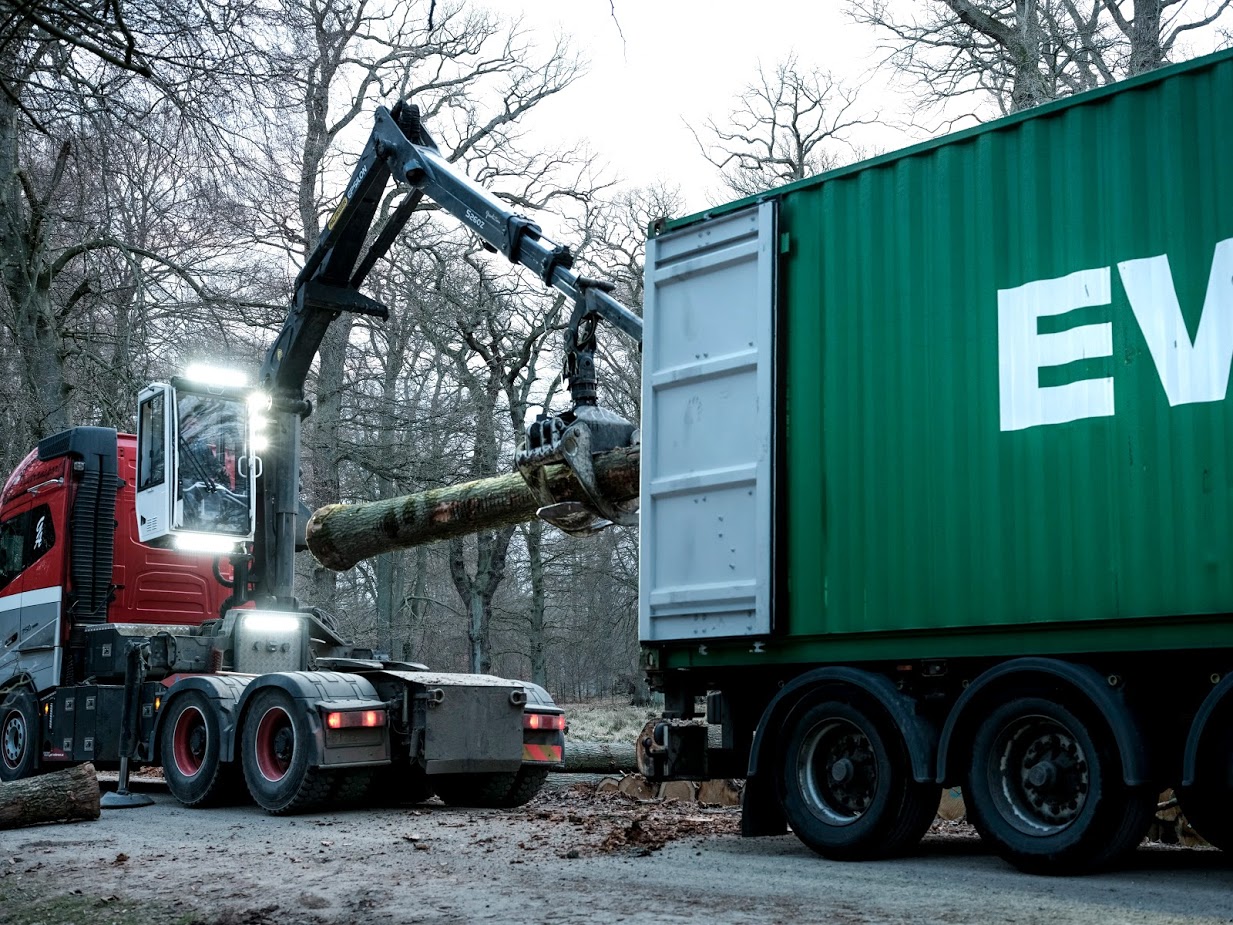Danish Hardwood is a well-established company in Denmark with almost 60 years of experience in the wood industry. It is also a customer with a long-lasting relationship with Greencarrier Liner Agency Denmark, and Evergreen who have managed part of their container transport for over 20 years. We had a chat with Peter Ditlev Riisgaard Sørensen, Shipping Manager at Danish Hardwood, to learn more about the wood industry, what challenges there are when handling transport and logistics of timber, and what do they value most in their choice of transport suppliers?
Peter, what is Danish Hardwood’s most important types of woods?
As our name indicates, it is hardwood. 80% of our export is beech. Remaining 20% is a mix of oak, ash and maple. We export both logs and sawn timber from our own sawmill.
What makes these types of Danish woods attractive?
The climate in Denmark, Germany and southern part of Sweden is very good for these hardwoods. Danish origin are especially known for its high quality. Furthermore, the majority of the Danish forests are FSC-certified. To secure this certification, the forest managers or owners have to agree and follow a set of criteria, including re-planting, sustainability and cutting limitation.
Which country is the biggest competitor for Danish timber?
Germany. The forests in Germany are much bigger than in Denmark. That is why Danish Hardwood actually also export timber from Germany. Our origin of export is as following:
Denmark: 60%
Germany: 15%
Sweden: 10%
Poland: 10%
France + Croatia: 5%
Where is the timber mainly exported to, and who are your customers?
It is mainly exported to China and Vietnam. Our customers are traders, sawmills and production factories. The majority (80%) of our customers in China are traders. While our customers in Vietnam are mainly sawmills and production factories.
What is the timber mainly used for?
The final products include flooring, furniture and doors. About 40% is used at the local market in China and Vietnam. The remaining products are re-exported worldwide to Japan, Australia, USA and back to Europe.
How do you transport your goods and how important is the transportation for you?
We transport 75% in containers to overseas markets. 25% by truck to European customers. The transportation is as important as our product. We are working in an international environment, where we can only do business if we can have it transported efficiently to our clients.
Are there any special challenges handling transport and logistics of timber?
The container transport itself, is straightforward, but when doing a “live-loading” in the forest it can be very challenging. In order to be as efficient as possible we try to limit the stuffing of containers to 20-30 minutes. This requires precise coordination between several truckers, the loading crane driver, plant authorities and our staff supervising inspection of the loadings as well as fumigation of the containers, when needed.
I assume that logs and lumber could be very hard on the containers. Do you often have damages to containers?
No, not as much as in the past as loading methods and experience has improved every year. We have handled more than 2.400 TEU so far, this year, and not received any damage claims from carriers.
Do you foresee any changes and challenges in the Danish wood industry?
Since we are an export company, working internationally, we are very much dependent on the economic and political trends and cycles, which can be difficult to foresee.
What do you value in your selection of transport suppliers?
Price, schedules, transit times and personal customer service relations.
Price, since logs and lumbers are a relative low value product, the transportation costs can sometime be almost 25% of the sales value. Therefore the total transportation costs always have an effect on the price we are able to offer our customers.
Schedules and transit times, since this is especially important to sawmills and production factories. If the schedules and transit times informed before loading are not reliable, it could cause a production stop for our customers. However, we sometimes also ask for “Slow boats”, in order to prevent cargo arriving at destination during national holidays like Chinese New Year and Golden Week for example.
What is your main focus when choosing a transport partner?
As mentioned, we unfortunately cannot ignore the price. But price is not everything and a close and personal working relationship built on trust and experience is just as important. This helps in case of any challenges, which can sometimes happen when you do international trade.
How would you rate Greencarrier Liner Agency Denmark, based on above criteria?
Schedules, prices and transit times are more or less in line with the competition. While the customer service and flexibility are highly appreciated. They are easy to get in contact with, and fast in replying to enquiries.
How many years have you been a client of Greencarrier Liner Agency and Evergreen?
Personally, I have been using Evergreen as long as I have been in the industry, and Danish Hardwood has used Evergreen already before I started in the company.
Thank you Peter for an interesting conversation and for giving us an insight into the timber industry. We hope that we will continue to have the trust and privilege to offer our container transports to Danish Hardwood for many years to come.
If you want to read more articles from us visit Greencarrier blog or Greencarrier Liner Agency website!
About Danish Hardwood – www.danishhardwood.com
Danish Hardwood was originally founded as a sales organization for a group of Danish Sawmills. The company does not possess its own forest but the wood comes mainly from government and privately owned forests. Danish Hardwood also owns and exports from its own sawmill on Sjaelland.





